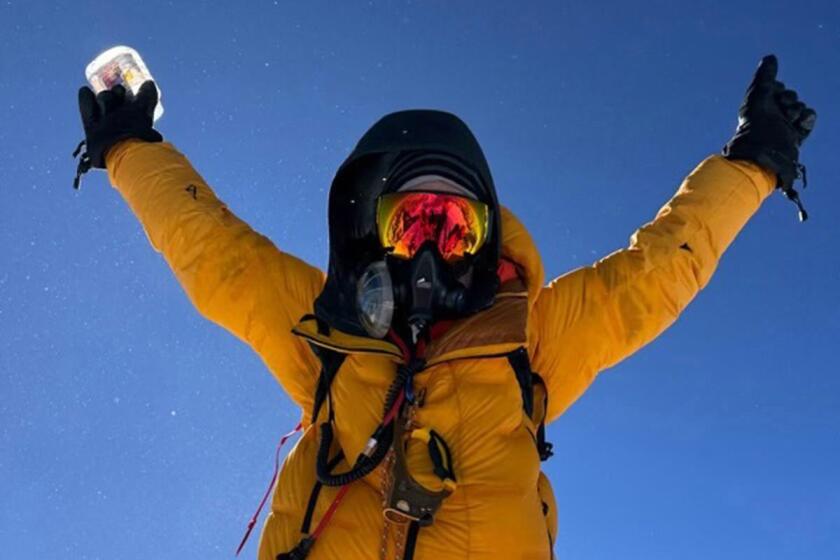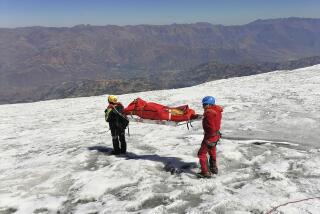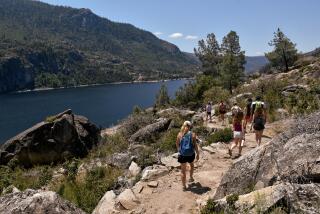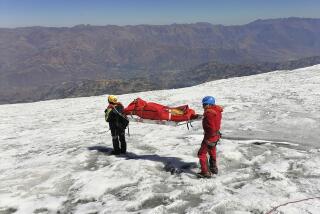Mount Everest’s highest camp is littered with frozen garbage, and cleanup is likely to take years
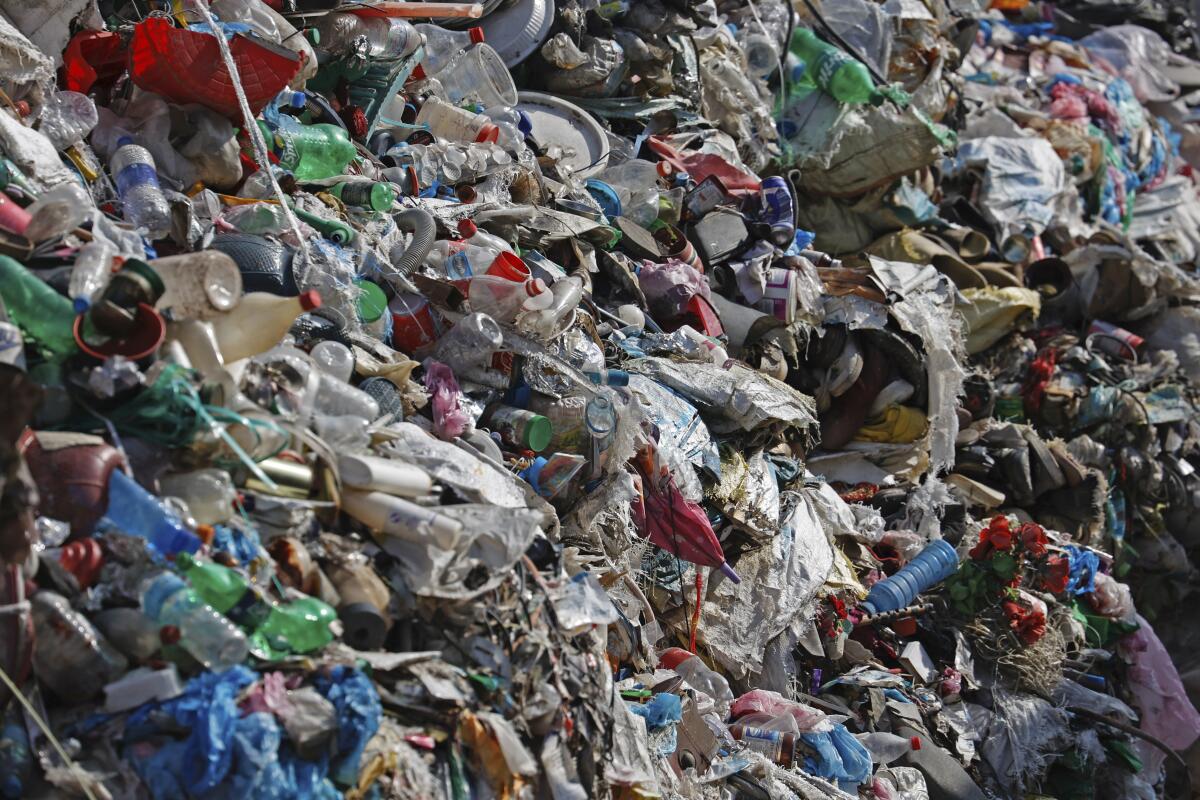
KATHMANDU, Nepal — The highest camp on the world’s tallest mountain is littered with garbage that is going to take years to clean up, according to a Sherpa who led a team that worked to clear trash and dig up climbers’ bodies that were frozen for years near Mount Everest’s peak.
The Nepalese government-funded team of soldiers and Sherpas removed 11 tons — 24,000 pounds — of garbage and five bodies from Everest during this year’s climbing season.
Ang Babu Sherpa, who led the team of Sherpas, said there could be as much as 40 to 50 tons of garbage remaining at South Col, the last camp before climbers make their attempt on the summit.
“The garbage left there was mostly old tents, some food packaging and gas cartridges, oxygen bottles, tent packs and ropes used for climbing and tying up tents,” he said, adding that the garbage is in layers and frozen at the 26,400-foot-high camp.
Since the peak was first conquered in 1953, thousands of climbers have scaled it, and many left behind more than footprints.
In recent years, a government requirement that climbers bring back their garbage or lose their deposits, along with increased awareness among climbers about the environment, has significantly reduced the amount of waste left behind. However, that was not the case in earlier decades.
Graham Cooper and Adrian Ballinger, California mountaineers whose training for Mt. Everest included sleeping for months in hypoxic tents that mimic conditions at extreme altitude, reached the world’s highest summit this week.
“Most of the garbage is from older expeditions,” Ang Babu said.
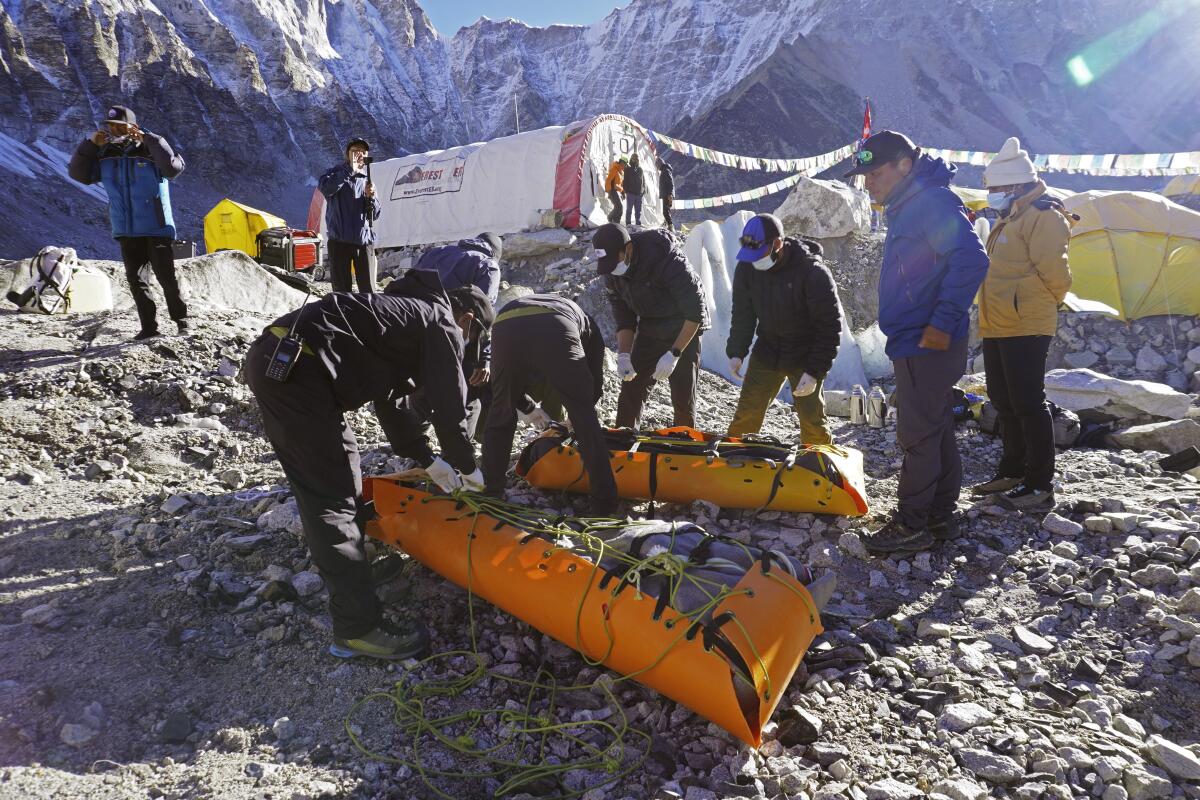
The Sherpas on the team collected garbage and bodies from the higher-altitude areas, while the soldiers worked at lower levels and the base camp area for weeks during the popular spring climbing season, when weather conditions are more favorable.
Ang Babu said the weather was a big challenge for work in the South Col area, where oxygen levels are about one-third the normal amount, winds can quickly turn to blizzard conditions and temperatures can plunge.
“We had to wait for good weather when the sun would melt the ice cover. But waiting a long time in that altitude and conditions is just not possible,” he said. “It’s difficult to stay for long with the oxygen level very low.”
Two families’ struggle for justice reveals the dark truth of Saudi Arabia’s labor system.
Digging out the garbage is a big task, since it is frozen inside ice.
It took two days to dig out a body that was frozen in a standing position deep in the ice near the South Col, he said. The team had to retreat to lower camps during the process because of deteriorating weather, then resume after conditions improved.
Another body was much higher up, at 27,720 feet, and it took 18 hours to drag it to Camp 2, where a helicopter picked it up.
The bodies were flown to Tribhuvan University Teaching Hospital in Kathmandu for identification.
Of the 11 tons of garbage removed, three tons of decomposable items were taken to villages near Everest’s base, and the rest was carried by porters and yaks, then taken by truck to Kathmandu. There, it was sorted for recycling at a facility operated by Agni Ventures, an agency that manages recyclable waste.
“The oldest waste we received was from 1957, and that was rechargeable batteries for torch lights,” said Sushil Khadga of the agency.
Why do climbers leave garbage behind?
“At that high altitude, life is very difficult, and oxygen is very low,” Khadga said. “So climbers and their helpers are more focused on saving themselves.”
Gurubacharya is an Associated Press writer.
More to Read
Sign up for Essential California
The most important California stories and recommendations in your inbox every morning.
You may occasionally receive promotional content from the Los Angeles Times.
